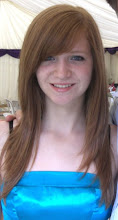SHOT SEQUENCE ANALYSIS

From “Sin City” (1)
Low angle crane, low-key lighting, black and white, MCU, wood effect background suggests he is lying on the floor, and he is pointing a gun upwards, suggesting someone is above him. The gun could mean he is either an attacker or is defending himself. His hand is holding his ear, possibly because he is trying to block out the sound of the gunshot, or he has been shot in the ear. Low angle and position on floor shows he is vulnerable.

From “Sin City” (2)
High angle, low-key lighting, black & white, it is an ELS. Man standing over other man pointing gun. The high angle shows the standing man has more power makes the lying man seem more vulnerable. Can now see that the man is lying on a jetty, suggesting that the standing man intends to shoot him and then throw him in the lake. The lying man has changed position slightly in that he is no longer holding his ear, meaning that either he has been startled or he is no longer planning to shoot.

From “Sin City” (3)
ELS, black & white, and there is low-key lighting. We can now see two men, making the lying man even more vulnerable as he is outnumbered and on the floor. One man is standing over him menacingly, as if he is shouting at him, and the lying man has his knees bent towards himself, showing he is scared and trying to defend himself. The second man looks like the boss of the standing man because he is wearing black, whereas the other guy is wearing a lighter colour. Also, he is standing back and not getting his hands dirty. It looks like he is talking into his phone or some kind of gadget, suggesting this is part of a grand scheme. You can now see it is in a shipyard because of the corrugated iron building behind, and the ships in the background. The sky is dark showing it is night, making it scarier. The lying man is isolated, and the fact you can see under the jetty, makes it seem like it is more flimsy. There is a girl also on the jetty, suggesting she has also been kidnapped and that maybe the floor man has tried to rescue her.

From “Sin City” (4)
LS, black & white, low-key lighting, same angle as the previous shot but zoomed in, increasing the tension. You can now only see one standing man, directly pointing a gun at the floor man. There is the girl again, in the shadows. She looks like she has been there for a while as she doesn’t appear to have any motivation to free herself. The gun is pointing at his head, implying that he is about to shoot at the floor man. The girl’s head is bowed, as if she could be crying. The man could be her father, as it would make sense for him wanting to rescue her. The standing man’s coat is flowing the wind, making him seem powerful and dominant.

From “Sin City” (5)
CU, black & white, and there is low-key lighting. She looks young, about 7 years old, and she is crying. This is possibly because her father (or just a random man) is about to be shot, or because she is scared and lonely. Her line of sight suggests she is looking at the floor man, implying they have some sort of connection.

From “Sin City” (6)
ELS, black & white, and there is low-key lighting. The floor man no longer has his knees up, implying he could have just been shot. The main standing man appears to be leaning against one of the poles, making it more relaxed as he is no longer being threatened / threatening the man. The girl can still be seen in the same position, so nothing has happened to her yet. You can see the man in black again, with his hands in his pockets. This nonchalant manner suggests he witnesses murder on a daily basis, and is not phased by it. There are clouds / smoke in the background, making the photo more atmospheric.
The director varies the shot types, to give more information to the audience and builds tension, by only including certain things later on, such as the man in black. Each shot develops the story, but the director makes the audience work to understand the meaning in this short sentence, instead of making it obvious. This is to make it a more exciting cinematic experience. When we first see the images, we read them by making assumptions about where the story is going, but the more shots we are shown, and from the different angles, we are able to fit together the different components.

0 comments:
Post a Comment